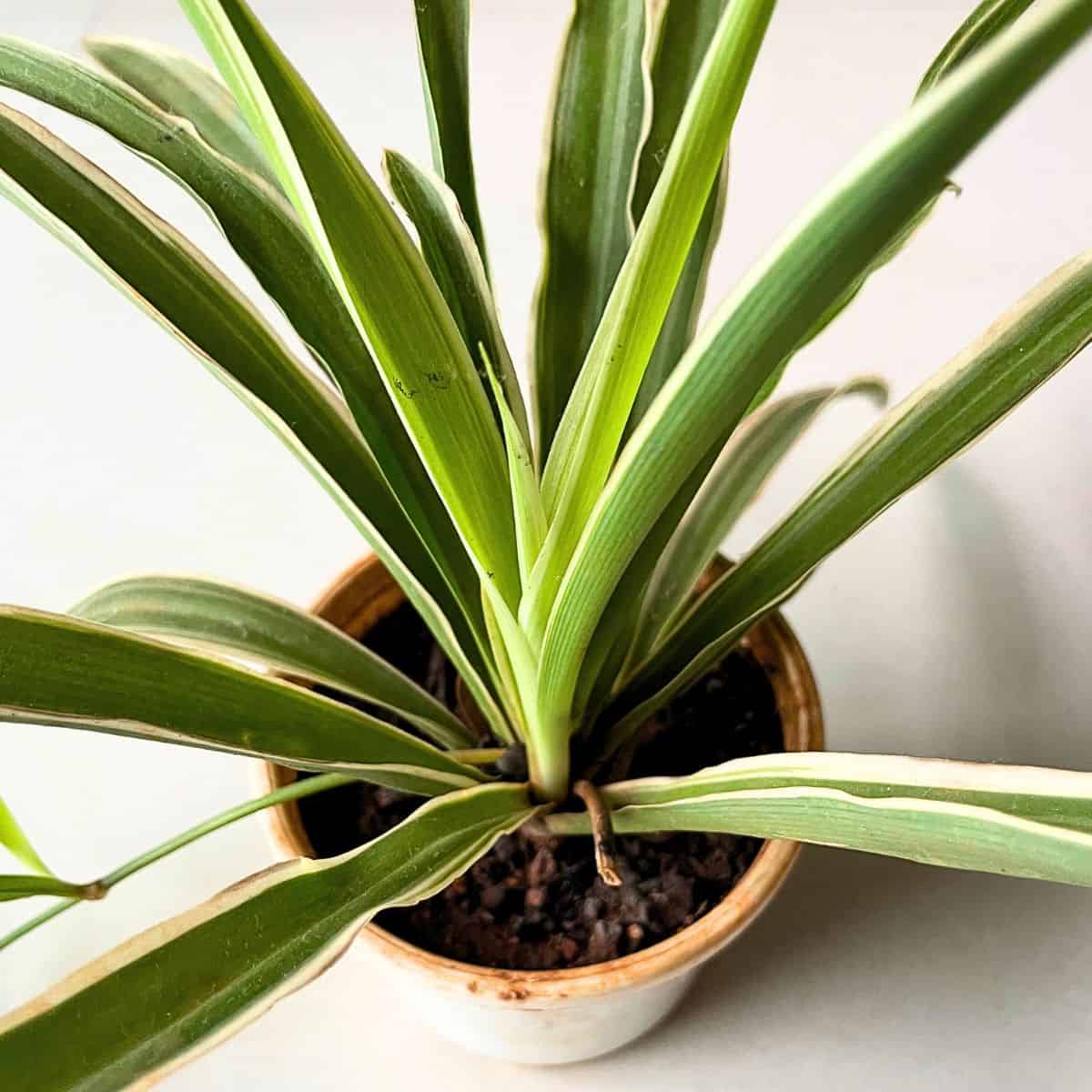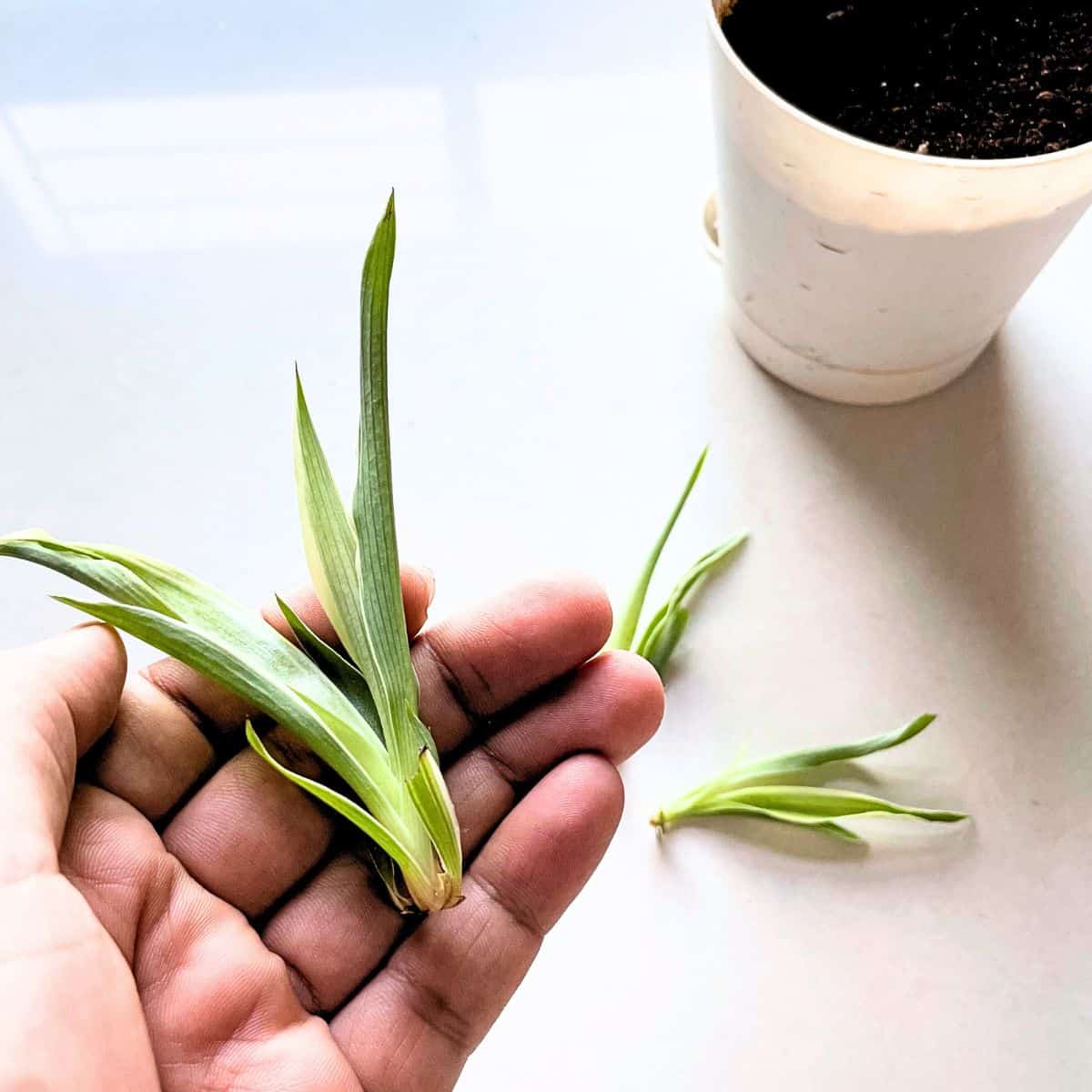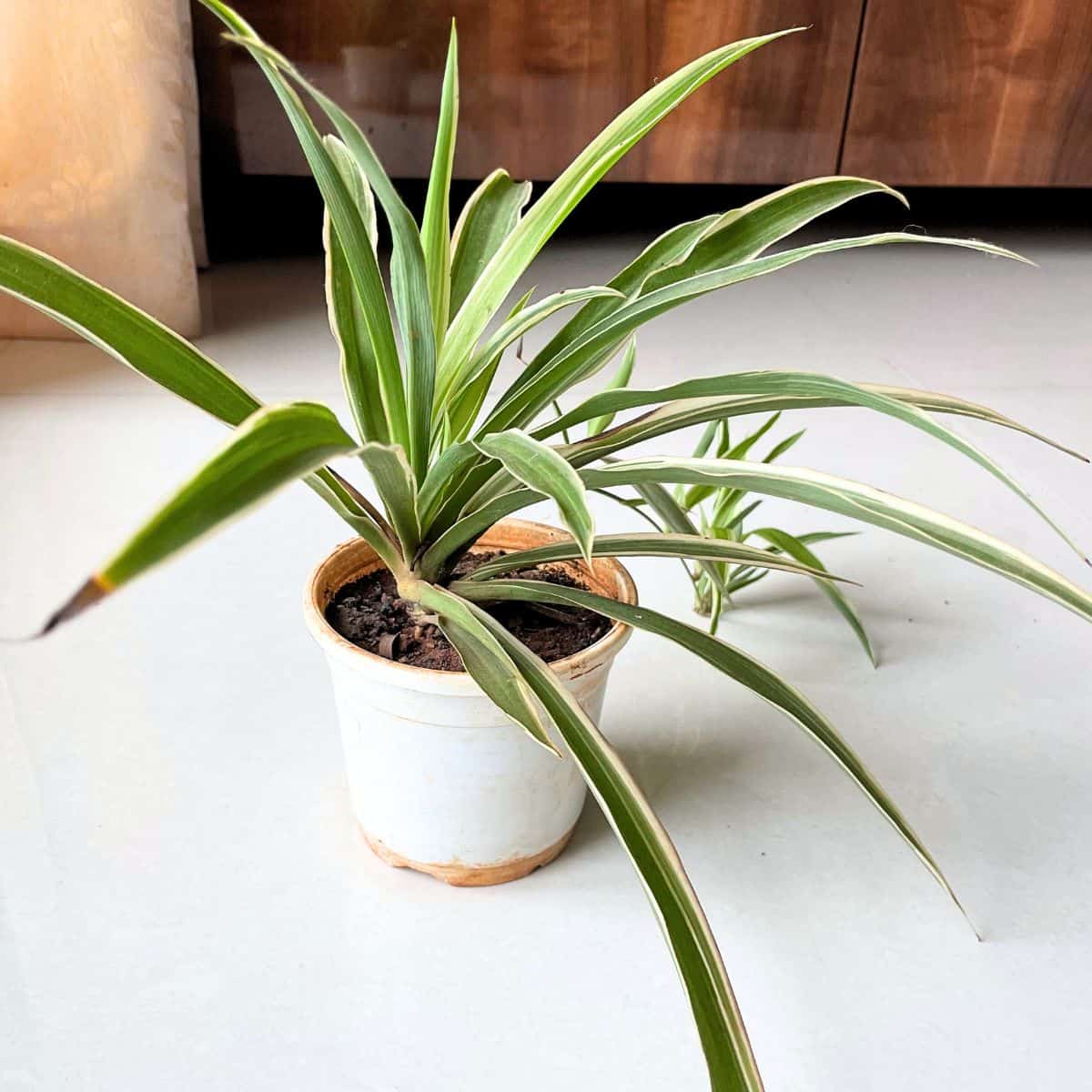The Spider plant lives up to 2-5 years but it follows a unique life cycle. It goes through different growth stages until the end of the journey.
From a baby plant to a mature plant producing small pups, the Spider plant depicts four primary growth stages in its entire life cycle. In each phase, you get to see some intriguing features of this plant as it grows in size.
So, let’s explore more about it in the following guide.

Jump To:
Spider Plant Life Span
Like most indoor plants, the Spider plant has a lifespan of 2-5 years. However, it depends on several external factors, such as watering issues, weather conditions, sunlight, and pot size.
If the Spider plant gets the right conditions and proper care, it can outlive the estimated lifespan and live for many years. In fact, you can pass on this plant to the next generation in the family.
4 Different Growth Stages Of Spider Plant Life Cycle
As I mentioned earlier, the Spider plant follows a slightly different path to complete its lifecycle.
Most indoor plants do not send out wiry stems, but you will get to see this unique characteristic in this plant. Now, let’s check out the different lifecycle stages below.
1. Baby Plant
This is the initial stage of the Spider plant’s lifecycle. It is also a delicate stage, as you need to take care of the plant quite thoroughly.
Generally, you can get baby plants from a mother plant if you have one at home.

Alternatively, you may get them from a garden center or online stores. The baby plant stage lasts a bit longer, as the plant takes more time to grow into grown-up or mature plant stages.
E.g.,
If you have brought a baby Spider plant home, it might require at least 5-6 months to turn into a fully-grown plant. This is why you need to be careful while growing such a young plant.
Quick Tip: Whenever you want to get this plant home, make sure you select a medium-sized plant instead of a smaller one.
This way, you will essentially skip the first stage of its lifecycle, and you won’t have many difficulties growing this plant at home. The above tip is quite useful for beginners who have never grown Spider plants in their home garden.
2. Grown-Up Plant
It’s the second step in the development of the Spider plant. When the plant begins to form relatively larger leaves with a broader shape, you will know it has reached the grown-up stage.

Once the plant reaches this stage, it won’t mind if you neglect it for a bit. It will do just fine, as it stores most of its resources in the root system.
As for the duration of this stage, the plant can stay in this stage for another couple of months.
Sometimes, it also depends on the season. If the plant reaches this stage by winter, the same period can stretch up to 6 months too.
3. Mature Plant
Now, this stage of the Spider plant is pretty unpredictable, as you won’t get to know when the plant becomes mature while growing up.
The only way you can confirm this stage is by seeing the new offshoots around the plant or through the long wiry stems.

In case you don’t know, it develops these aerial runners that often produce flowers and give birth to new pups. It’s more like a reproduction phase for the plant, and it only happens when the plant reaches a certain age.
This stage also depends on the weather conditions and the availability of nutrients in the pot. Without these two elements, it won’t produce new babies on the plant.
As for the runners, there will be several runners growing on the mother plant. You can either keep these runners on the plant for new babies or remove them entirely.
Overall, this is pretty much the longest phase of the Spider plant’s life. The plant continues to produce new stems and pups throughout its life.
So, you just need to take care of the plant really well.
4. End Of Lifecycle
This is the final stage of the Spider plant’s life.
Although the plant survives for a few years, it will surely reach this stage at some point. Once it reaches this stage, it will show some signs that are peculiar to older plants.
During this stage, you will see a drop in the production of new stems and pups.
The plant may also produce fewer leaves as it gets older. Ultimately, the leaves will turn yellow and begin to droop in the final stage of its life.
Now, these are the four important stages of a Spider plant’s life cycle. In the following section, let’s learn more about how you can care for this plant at each growth stage.
Tips For Extending Spider Plant’s Life Cycle
Here’s a list of tips to use in different growth phases of your Spider plant –
1. Don’t Overwater Young Spider Plant
Although this applies to pretty much every stage, you need to be extra cautious during this stage.
The baby plants won’t tolerate excess water at all, and it’d be very difficult to recover them from this situation.
2. Avoid Direct Sunlight
Yes, the Spider plant does thrive in natural sunlight, but you should never keep it in direct sunlight.
If you do, the plant will not cope with this stress. The excess sunlight will make its leaves turn yellow and brown. If the same situation persists, the plant won’t survive for too long.
3. Avoid Overfertilizing
This plant doesn’t need a lot of fertilizers to grow at a steady rate. So, you shouldn’t overfertilize it in any situation.
Even if you don’t see any pups or stems on the plant, you should just wait for a few weeks. It will come up with new growth.
4. Keep It In An Airy Place
No matter what stage of life the Spider plant is in, you should always keep it in a well-ventilated place. This helps keep the plant dry all the time, which also helps avoid any possible issues that can damage it entirely.
So, try to find a place in your home with enough ventilation for such plants. You can also place it near a window to receive sufficient air and sunlight.
5. Prune The Plant Regularly
When the plant reaches a certain stage, start pruning it regularly. The pruning technique keeps the plant in good condition. It also prevents excess moisture around it.
Apart from that, it encourages the plant to produce new growth in the future.
However, don’t go overboard on this process. Try to remove only unwanted leaves and stems from your Spider plant.
You should also repot the plant once a year to maintain its steady growth rate. Watch the following video to learn the detailed repotting steps for your Spider plant.
Alright, so these are some of the basic things you need to do if you want to keep your plant growing at every stage.
In the following section, you will find some FAQs and answers related to this topic. Have a look at them if you have any similar queries in your mind.
FAQs
Yes, the Spider plants live all year, depending on the conditions. If the plant receives harsh conditions, it may or may not survive till the following season.
It can take up to 6-8 months for you to see babies on your young Spider plant.
There are many things that can make it challenging for your Spider plant. The issues like fungal attacks, bug attacks, pest attacks, and extreme weather can surely cause severe damage to the plant.
Yes, you can cut the brown tips off your plant. However, the plant will not grow the tips back, and it may not look great either.
You should place this plant in an airy and sunny location. Both these conditions are an absolute must for the plant. Without them, you may not see decent growth in it.

Leave a Reply